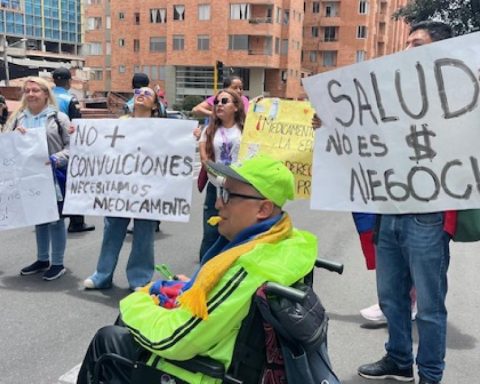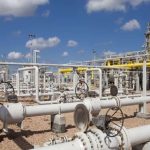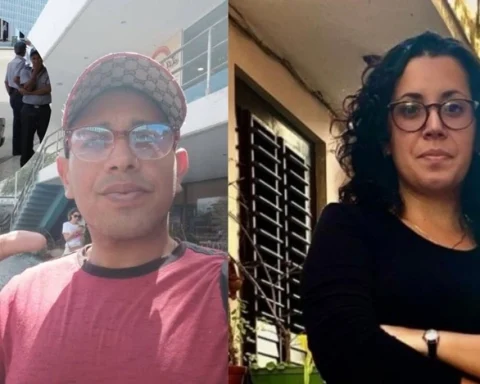Enel Colombia, headed by Lucio Rubio, It hopes to put three projects in the country this year, totaling 350 renewable megawatts. TOThe company itself is looking within its portfolio for the best options to participate in the reliability charge auction.
How did the company do in 2022 and what expectations do you have for 2023?
It was a very good and very interesting year for us, because it was the first in which we consolidated the Enel Colombia operation. We received authorization from the Superintendence of Companies in March of last year and with this we merged three companies: Emgesa, Codensa and Enel Green Power. In addition, we incorporated within the geographical scope of operation three countries: Panama, Guatemala and Costa Rica.
The results that we presented to the Assembly in economic terms were the result of this consolidation and basically we presented that the company’s Ebitda reached $6.3 trillion, net profit closed at $2.9 trillion and a consolidated debt of the group close to $6, 2 trillion.
(Read: What is included in the new policy to regulate the energy service).
The parent company announced that Colombia would be one of the key markets. What is the investment plan to achieve this?
In 2022 we will invest $2.9 trillion in this work. In the strategic plan that we have for 2023, 2024 and 2025, we are talking about investments that exceed $7 trillion. These resources will be focused on our strategic pillars, which have two fundamental drivers: continue working on the decarbonization of the economy and on the electrification of the economy.
Today we are building five projects: La Loma with 187 megawatts, Windpeshi with 205 megawatts, Guayepo with 487, Fundación with 132; and in Panama we are building Madre Vieja and Baco. Of these 1,000 megawatts that we are building, La Loma, Fundación and the expansion of El Paso will enter this year.
Lucio Rubio, CEO, Enel Colombia Group.
Courtesy
What difficulties have you had in the construction of the works?
There’s only one project we’re really having difficulties with, Windpeshi, which is permanently suffering from blockages. Last year we were only able to work 180 days and we have started this year with 45 days of blockades. The main problem we have is the cost overruns derived from standby. It also generates some delays in the entry of the project, which was due to enter at the end of 2022 and we are not seeing it until 2024 and even the first half of 2025.
How are you handling these delays, taking into account that some projects have auction obligations?
What we are doing is covering the energy that we are obliged to deliver to distributors with energy from our portfolio, or with other purchases that we are making.
(In addition: Services regulated by the Government, among those that increase inflation the most).
There is an important issue and that is that the objective of 10% of the portfolio of the marketers being renewable energy will not be met.
How are the works on the Sogamoso line and the North substation in charge of GEB progressing? Do you see risk in your operation in Bogotá due to delays?
Yes. We have warned that there are not only delays in the generation projects, but also in the transmission system.
The North substation is very complex for Bogotá, because the center of consumption growth is the north, precisely where large residential projects and industrial estates are being built. It is also a very important structure to give reliability to the city and the region.
If we do not solve this, the company will not be able to continue giving connection requests, because there is no transformation capacity. This is a project that has been going on since 2014 and has not materialized.
Do you see a risk of blackout or shortage?
I don’t like to talk about blackout. I think it is a reality that we are in a condition of vulnerability. In other words, there are generation projects that have not entered, there are transmission projects that have not entered and that generates restrictions on energy flows.
Everything points to the fact that at the end of this year and the first semester of 2024 the condition of the Child is accelerating. Faced with this narrower panorama is when we say that it is more vulnerable.
The Creg launched a reliability charge auction. Do you see projects to participate? Do you think it is attractive to participate in the current scenario?
We have always been defenders of these auction mechanisms, both for the reliability charge and for the sale of long-term energy. We believe that it is a very positive system for the price to be formed through the market.
(In addition: Government appoints two of the six expert commissioners of the Creg).
What we are looking at is an auction for the years 2027 and 2028, but we cannot lose sight of the fact that there are still two years before which the reliability charge has not yet been assigned, which are 2025 – 2026 and 2026 – 2027. Let’s say that we we are jumping two years.
We are looking into the portfolio of projects with a long-term vision, which we have scheduled for 2025 and 2030, which is an additional 1,800 megawatts. We are looking at what projects could be coupled to be presented.
DANIELA MORALES SOLER
Portfolio Journalist

















